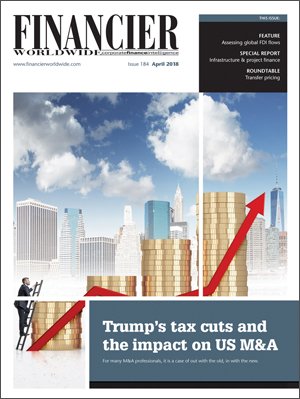Following a relatively subdued 2017, this year is expected to be more active for dealmaking in the life sciences sector.
Last year the total value of life sciences M&A was around $200bn. Notable deals included Johnson & Johnson’s acquisition of Actelion for $30bn and Gilead’s purchase of Kite for $12bn deal.
However, despite a relatively lacklustre 2017, the biotech industry has enjoyed a blockbuster start to 2018. An explosion of M&A activity in January saw $27.5bn worth of deals agreed – the strongest opening for a decade.
US biopharmaceutical giant Celgene Corp agreed to acquire Impact Biomedicines for $7bn and Juno Therapeutics, Inc for $9bn. Novo Nordisk offered $3.1bn for Ablynx and Takeda Pharmaceutical offered to acquire TiGenix for $630m. French pharma powerhouse Sanofi announced an $11.6bn deal for haemophilia drugmaker Bioverativ, a Biogen spinout that is less than a year old. Varian Medical Systems is to acquire Sirtex Medical for $1.3bn.
Despite rapid changes in the $10bn haemophilia market, caused by a novel drug from Roche and the potential of gene therapy to provide a one-time cure, Sanofi is confident that Bioverativ will boost its earnings immediately and will continue to dominate the haemophilia space.
So far this year, buyers of life sciences companies have agreed to pay an average premium of 81 percent, according to Dealogic, well above the 42 percent typically paid in 2017.
One of the key drivers behind the dealmaking boom has been the recent US tax reforms, which reduced corporation tax in the US to 21 percent from 35 percent, bringing the country much closer to comparable advanced economies. US companies will also no longer have to pay corporate taxes on income earned overseas – these will be taxed between 8 and 15.5 percent instead of 35 percent. This change will allow pharmaceutical firms to repatriate billions of dollars.
Many larger pharma firms and biotech businesses appear to be using the tax reform to bolster their product lines by acquiring smaller and more innovative start ups, and the push for deals looks set to continue. Following the two sizable deals announced by Celgene, the company told investors that it will continue to pursue acquisitions in the coming months. “We will continue to aggressively invest in research and development and to deploy capital to acquire or licence the most promising science, technology and products,” said chief executive Mark J. Alles.
According to an EY report, 2018’s total deal value is on course to exceed $200bn due to the increased financial firepower and balance sheet strength at the disposal of many biotech organisations. Pent-up demand will drive dealmaking. Sixty percent of life sciences executives surveyed by EY in October 2017 said that they were planning to actively pursue M&A in 2018, up from 46 percent in April 2017.
Furthermore, a Baker McKenzie report has forecast that global healthcare M&A could increase by 50 percent in 2018 up to $418bn, with North America accounting for well over half of transactions due to an increase in available cash. Amid pressure from maturing markets and in search of new opportunities to grow revenue, firms should continue to pursue deals. Industry giants including Merck, Pfizer and Amgen are all believed to be likely candidates to expand via M&A in 2018.
The innovation pipeline will also drive dealmaking. With 46 new drugs approved in 2017 in the US – the most in 20 years – Big Pharma companies will continue to look for growth opportunities wherever possible.
© Financier Worldwide
BY
Richard Summerfield

